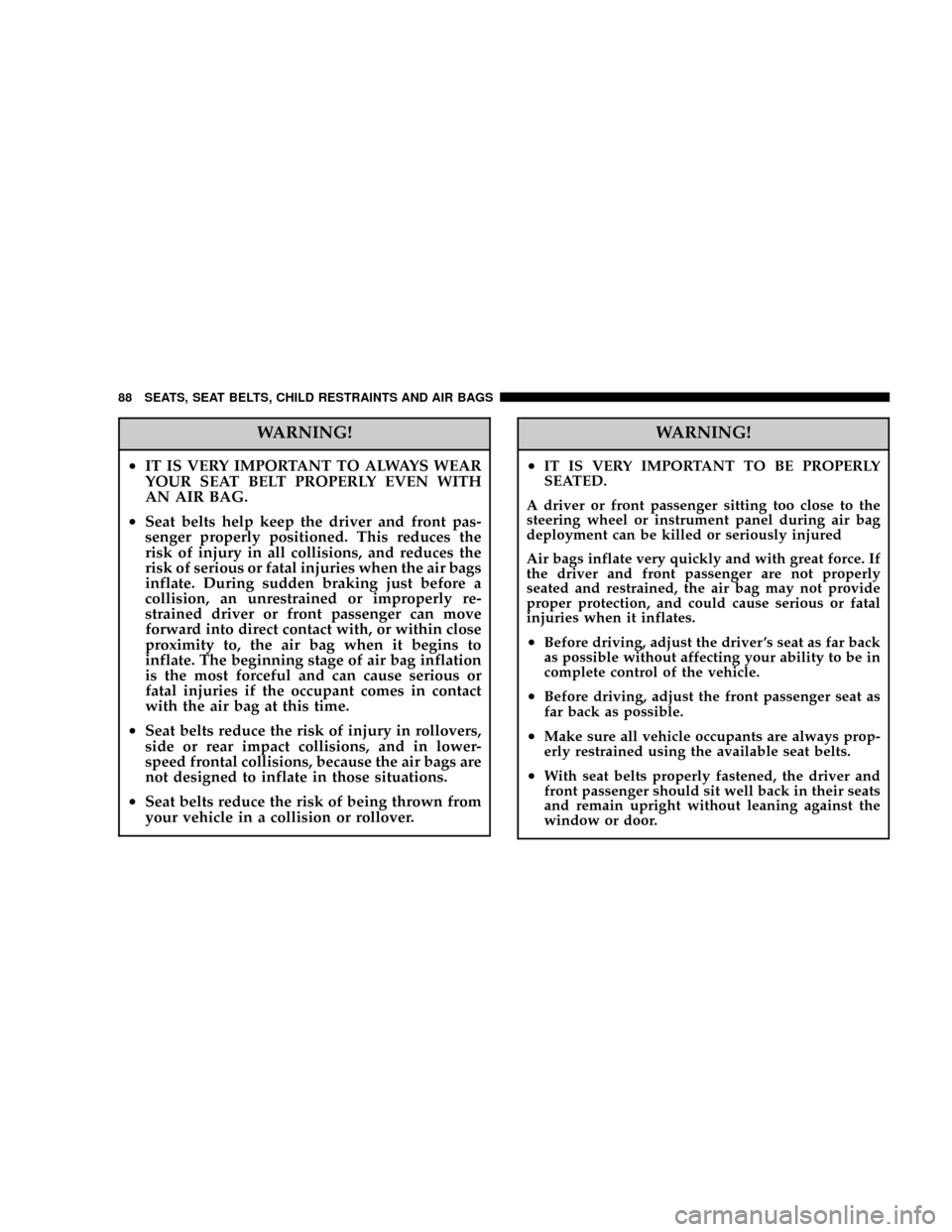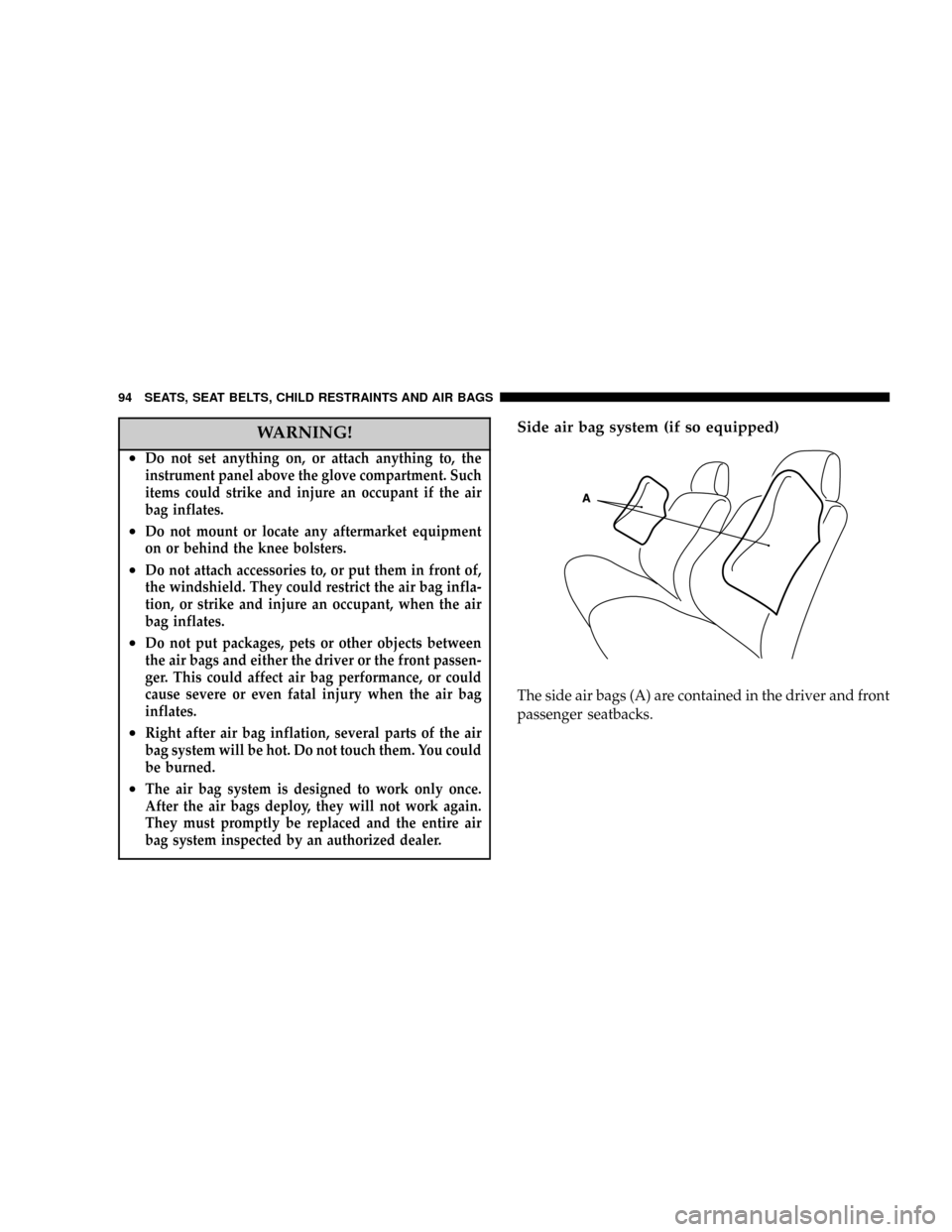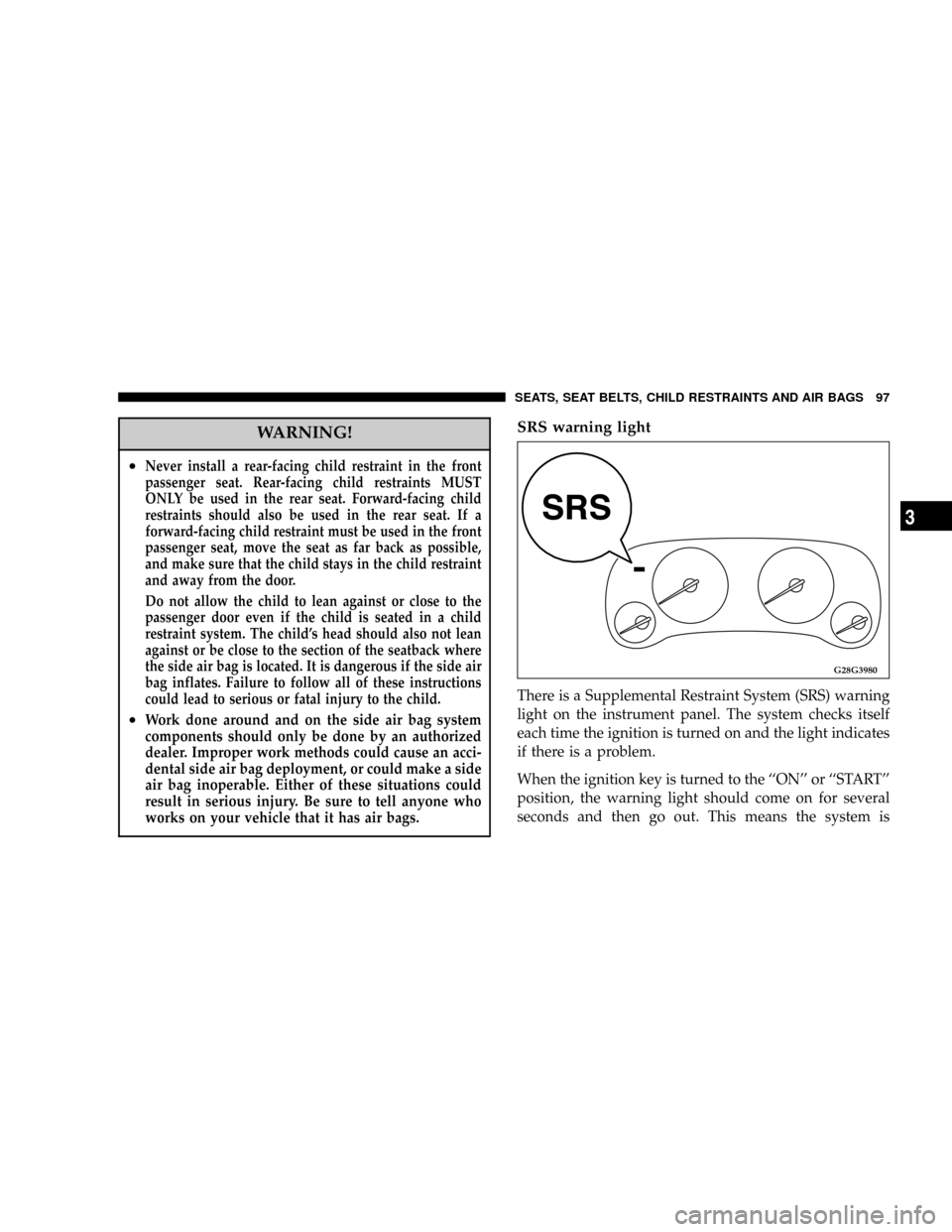Page 5 of 382
WARNINGS, CAUTIONS AND NOTES
This manual containsWARNINGSagainst operating
procedures which could result in an accident or bodily
injury. It also containsCAUTIONSagainst procedures
which could result in damage to your vehicle. If you do
not read this entire manual you may miss important
information. Observe all Warnings and Cautions. Notes
are provided as helpful information.
VEHICLE IDENTIFICATION NUMBER
Vehicle Identification Number (VIN) is found on a
stamped plate located on the driver's front corner of the
instrument panel, visible through the windshield. This
number also appears on the vehicle registration or title.
WARNING!
This product contains or emits chemicals known to
the State of California to cause birth defects or other
reproductive harm.
INTRODUCTION 5
1
Page 6 of 382
Overview - Instruments and controls
1. Instrument cluster!p. 104
2. Ignition switch!p. 1453. Supplemental restraint system-air bag
(For driver 's seat)!p. 87
Horn switch!p. 130
4. Hazard warning flasher switch!p. 121
5. Windshield wiper and washer switch!p. 124
6. Vents!p. 231
7. Supplemental restraint system-air bag
(For front passenger 's seat)!p. 87
8. Audio
9. Rear window defroster switch!p. 123
10. Air conditioning!p. 232
11. Fog light switch!p. 121
12. Hood release lever!p. 41
13. Instrument panel light dimmer control!p. 122
14. Combination headlight, dimmer and turn-signal
lever!p. 117
15. Cruise control lever!p . 111
16. Accessory socket!p. 207
17. Parking brake lever!p. 165
18. Gearshift or selector lever!p. 149, 154
6 INTRODUCTION
Page 88 of 382

WARNING!
²IT IS VERY IMPORTANT TO ALWAYS WEAR
YOUR SEAT BELT PROPERLY EVEN WITH
AN AIR BAG.
²Seat belts help keep the driver and front pas-
senger properly positioned. This reduces the
risk of injury in all collisions, and reduces the
risk of serious or fatal injuries when the air bags
inflate. During sudden braking just before a
collision, an unrestrained or improperly re-
strained driver or front passenger can move
forward into direct contact with, or within close
proximity to, the air bag when it begins to
inflate. The beginning stage of air bag inflation
is the most forceful and can cause serious or
fatal injuries if the occupant comes in contact
with the air bag at this time.
²Seat belts reduce the risk of injury in rollovers,
side or rear impact collisions, and in lower-
speed frontal collisions, because the air bags are
not designed to inflate in those situations.
²Seat belts reduce the risk of being thrown from
your vehicle in a collision or rollover.
WARNING!
²IT IS VERY IMPORTANT TO BE PROPERLY
SEATED.
A driver or front passenger sitting too close to the
steering wheel or instrument panel during air bag
deployment can be killed or seriously injured
Air bags inflate very quickly and with great force. If
the driver and front passenger are not properly
seated and restrained, the air bag may not provide
proper protection, and could cause serious or fatal
injuries when it inflates.
²Before driving, adjust the driver 's seat as far back
as possible without affecting your ability to be in
complete control of the vehicle.
²Before driving, adjust the front passenger seat as
far back as possible.
²Make sure all vehicle occupants are always prop-
erly restrained using the available seat belts.
²With seat belts properly fastened, the driver and
front passenger should sit well back in their seats
and remain upright without leaning against the
window or door.
88 SEATS, SEAT BELTS, CHILD RESTRAINTS AND AIR BAGS
Page 89 of 382
WARNING!
²Do not sit on the edge of the seat or lean your head
or chest close to the steering wheel or instrument
panel. Do not put your feet or legs on or against
the instrument panel.
²Seat all infants and children 12 years of age and
under in the rear seat properly restrained using an
appropriate child restraint system.
WARNING!
²Infants and small children should never ride
unrestrained, or lean against the instrument
panel. They should never ride held in your arms
or on your lap. They could be seriously injured or
killed in a collision, especially when the air bag
inflates. Children should be properly seated in
the rear seat in an appropriate child restraint
system. Refer to ``Child Restraints'' on page 74.
G28G1570G28G1760
SEATS, SEAT BELTS, CHILD RESTRAINTS AND AIR BAGS 89
3
Page 94 of 382

WARNING!
²Do not set anything on, or attach anything to, the
instrument panel above the glove compartment. Such
items could strike and injure an occupant if the air
bag inflates.
²Do not mount or locate any aftermarket equipment
on or behind the knee bolsters.
²Do not attach accessories to, or put them in front of,
the windshield. They could restrict the air bag infla-
tion, or strike and injure an occupant, when the air
bag inflates.
²Do not put packages, pets or other objects between
the air bags and either the driver or the front passen-
ger. This could affect air bag performance, or could
cause severe or even fatal injury when the air bag
inflates.
²Right after air bag inflation, several parts of the air
bag system will be hot. Do not touch them. You could
be burned.
²The air bag system is designed to work only once.
After the air bags deploy, they will not work again.
They must promptly be replaced and the entire air
bag system inspected by an authorized dealer.
Side air bag system (if so equipped)
The side air bags (A) are contained in the driver and front
passenger seatbacks.
94 SEATS, SEAT BELTS, CHILD RESTRAINTS AND AIR BAGS
Page 97 of 382

WARNING!
²Never install a rear-facing child restraint in the front
passenger seat. Rear-facing child restraints MUST
ONLY be used in the rear seat. Forward-facing child
restraints should also be used in the rear seat. If a
forward-facing child restraint must be used in the front
passenger seat, move the seat as far back as possible,
and make sure that the child stays in the child restraint
and away from the door.
Do not allow the child to lean against or close to the
passenger door even if the child is seated in a child
restraint system. The child's head should also not lean
against or be close to the section of the seatback where
the side air bag is located. It is dangerous if the side air
bag inflates. Failure to follow all of these instructions
could lead to serious or fatal injury to the child.
²Work done around and on the side air bag system
components should only be done by an authorized
dealer. Improper work methods could cause an acci-
dental side air bag deployment, or could make a side
air bag inoperable. Either of these situations could
result in serious injury. Be sure to tell anyone who
works on your vehicle that it has air bags.
SRS warning light
There is a Supplemental Restraint System (SRS) warning
light on the instrument panel. The system checks itself
each time the ignition is turned on and the light indicates
if there is a problem.
When the ignition key is turned to the ``ON'' or ``START''
position, the warning light should come on for several
seconds and then go out. This means the system is
G28G3980
SEATS, SEAT BELTS, CHILD RESTRAINTS AND AIR BAGS 97
3
Page 102 of 382

NChanging the setting for warning operation . . . 116
NAutomatic transaxle indicator
(if so equipped).......................117
NTraction Control System warning light
(if so equipped).......................117
NWasher fluid level indicator..............117
mCombination headlights, dimmer and
turn signal lever
.......................118
NHeadlights..........................118
NLight auto-cutout feature
(headlights, fog lights, etc.)...............118
NWhen you want to keep the lights on
(time delay)..........................118
NHeadlight reminder chime...............119
NHeadlight flasher (high/low beam).........119
NDimmer (high/low beam change)..........120
NTurn signals..........................120
mFog light switch........................121
mHazard warning flasher switch............122
mInstrument panel light dimmer control.......123
mElectric rear window defroster.............123
mWindshield wipers......................124
mIntermittent wipers.....................125
mWindshield washer.....................126
mPrecautions to observe when using wipers
and washers
..........................126
mDome light...........................127
mLights (dome lights, etc.) auto-cutout
function
.............................128
mReading lights.........................129
mRear personal lights.....................130
mHorn switch..........................130
mGarage door opener (if so equipped)........130
NTraining the Universal Transceiver..........131
102 INSTRUMENTS AND CONTROLS
Page 118 of 382

COMBINATION HEADLIGHTS, DIMMER AND
TURN SIGNAL LEVER
Headlights
Rotate the switch to operate the lights.
OFF - All lights off
- Parking, tail, front and rear side marker, license
plate and instrument panel lights on
- Headlights and other lights on
NOTE: Do not leave the headlights and other lamps on
for a long time while the engine is not running. A
discharged battery could result.
Light auto-cutout feature (headlights, fog lights,
etc.)
1. This feature will help prevent a discharged battery. If
the headlamps are left on ª
ºorªº when leaving
the vehicle (ignition key removed, in ªACCº or ªLOCKº
position), the lights will stay on for approximately 10
minutes and then turn off.
2. If the light switch is turned to ON ª
ºorªº
again, the light auto-cutout will not function and the
headlamps will stay on.
When you want to keep the lights on (time delay):
The lights can be made to stay on for about 60 seconds
after the driver leaves the vehicle. This feature provides
the safety of headlight illumination when leaving your
vehicle in an unlighted area.E11A0320
118 INSTRUMENTS AND CONTROLS